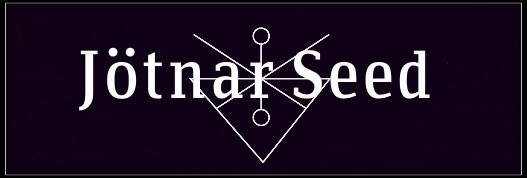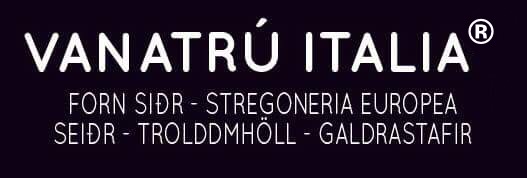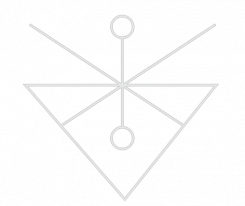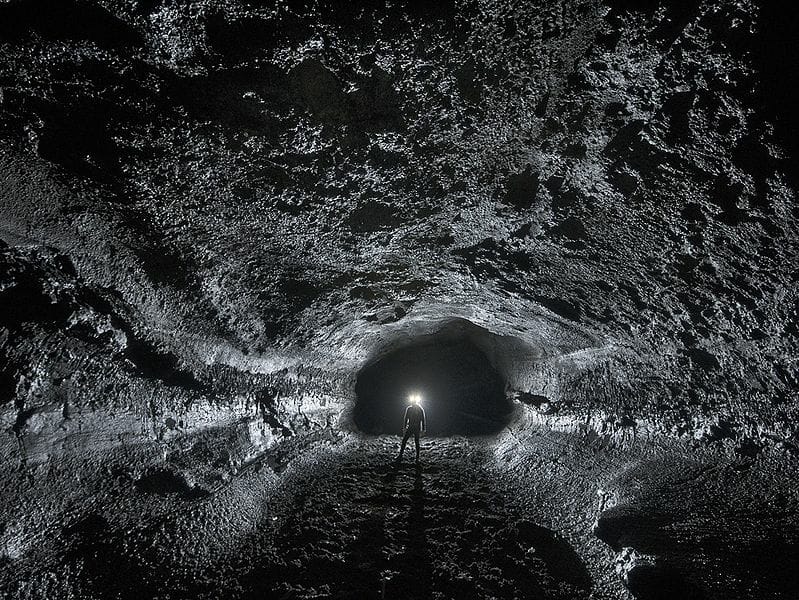Based on the news that emerged regarding a possible article that clarifies the presence of volcanic cult areas in Iceland, precisely in Surtshellir, we could not help but give you excerpts from this beautiful study.
With all the calm of the case and without drawing hasty conclusions, we will make an excursus following some steps of the archaeological work that you will find in the bibliography.
As an esotericist and archaeologist, I will not fail to give my personal conclusions, with interesting data in hand, to guarantee a 360-degree view of the event, since the theories are many and are not yet ascertained, but this does not take away the possibility of relating the new discoveries to a process of recovery of pre-Christian cults in Europe.
Surtshellir, a 1,600-meter-long lava cave within Iceland, contains a truly unique discovery that marks a turning point for the Viking age.
The archaeological site is located more than 10 meters below the surface of the Hallmundarhraun lava and almost 300 meters from its entrance. Since 1750 this site has been interpreted as a refuge for outlaws.
The Harðar Saga og Hólmverja (Hreinsson 1997) mentions outlaws taking refuge briefly in unnamed caves within the Hallmundarhraun around 975 AD. (Ingvarsson 1986: 398).
Archaeological fieldwork within Surtshellir in 2001, 2012, and 2013 yielded 20 new AMS dates, which combined with three prior radiocarbon dates, the basis for Bayesian analyzes and show that the cave formed in the first major volcanic eruption directly witnessed by northern Europeans; it began shortly after the Nordic colonization of Iceland began and people entered the cave as soon as it cooled enough to do so safely.
Surtshellir provides important new insights into Viking Age ritual practice, conversion and cultural responses to the existential challenges faced by newly arrived Icelandic settlers.
Towards the end of the 9th century AD, Viking-era settlers colonized Iceland unaware that they were settling on one of the most geologically active land masses in the world.
Medieval texts, archaeological evidence, isotopic and paleogenomic data agree that Icelandic settlers came mainly from Scandinavia and Scandinavian settlement areas in the British Isles: they were among the most volcanically stable regions in the world (Pálsson and Edwards 1972; Smith 1995; Helgason et al. 2000; Price and Gestsdóttir 2006; McGovern et al. 2007)
Yet preserved Norse Viking Age myths from the 13th century speak of the end of worlds when Surtur, an elemental being, who had been present at the creation of the world, kills the last of the gods in the final battle by spawning the Ragnarök, enveloping the world in the flames.
In 1905, Bertha Philpotts argued that specific beliefs about the end of the world were enshrined and were not brought to Iceland by her Norwegian settlers, but were linked to the first Icelandic volcanic manifestations (Philpotts 1905).
Finnur Magnússon hypothesized that the Surtshellir lava cave (literally “Surtur cave”) in the Hallmundarhraun lava field of western Iceland, was a site of the “cult of Surt” (Magnússon 1828), and even before the 13th century, it was present in the Icelandic Colonization Book, the Landnámabók, telling of a cave where the son of a chief went in the 10th century to sing a poem of praise, to the giant who lives inside (Pálsson and Edwards 1972).
With the renewed research conducted in 2001, 2012 and 2013, through this article we are able to have a documented of the architectural characteristics and cultural deposits of the material culture of the Viking era through the archaeological site that we retrace.
The “dark zone” of Surtshellir is about 10 meters below the earth’s surface. The results of this magnificent survey, reported below, you can view yourself through the work of Kevin P. Smith and Albína Hulda Pálsdóttir published in 2021 in the Journal of Archaeological Science.
Surtshellir is one of 20 known lava caves within the Hallmundarhraun lava field of western Iceland. Hallmundarhraun was formed from the third largest effusive eruption that has occurred since then.
Surtshellir is the 1.6 kilometer “downstream” part of the 5 kilometer stretch of the Surtshellir-Stefánshellir-Hulduhellir System (Hróarsson 2006; Wood et al. 2008). For most of its length the cave is a single tunnel, 10-15 meters high and 9-13 meters wide, winding west-southwest. However, two passages intersect the main tunnel 250 meters into the cave and 5-6 meters above its floor.
Archaeological features in these upper galleries, including a boat-shaped stone structure and piles of bones, were first described by Eggert Ólafsson and Bjarni Pálsson after their visit to Surtshellir in August 1753 (Ólafsson and Pálsson 1772) .
For more than two centuries, the features have been repeatedly mentioned by explorers and geologists.
The structure at Vígishellir, which excavated part of the remains of a heap of bones obtained two radiocarbon dates which confirmed these characteristics dating back to the Viking age (Ólafsson et al. 2004).
Back in 2012 it was discovered that a thin layer of grit on the floor of the structure was actually an artificial deposit containing Viking Age beads. Excavated this deposit in 2013, he also documented the additional features within it.
The main tunnel of Vígishellir, Beinahellir and Surtshellir include a massive stone wall, 10.5 meters wide and originally possibly up to 4.5 meters high, which blocks the main passage 175 meters from the cave entrance.
Behind this, 300 meters from the cave entrance, an area of archaeological features that includes two concentrations of unburnt and fragmented bones on the floor of the main tunnel between the openings of Beinahellir and Vígishellir, remains of four similar but larger piles of unburnt and fragmented bones at Beinahellir and the remains of a much larger pile of bones 50 meters deep at Vígishellir next to an intact stone structure in the shape of a boat. This heap, which covers an area of about eight square meters was described by Ólafsson and Pálsson in 1753 as “a great heap of bones.” This was almost completely sold out by visitors who took the bones as souvenirs, it was originally tall 0.7-0.8 mt (Ólafsson et al. 2004).
The structure next door is a dry stone enclosure with arched walls, shaped like a ship, with narrow openings.
A thin (<1.0-1.5 cm) artificial deposit of shattered basalt fragments and bones, located in the center of the structure and extending just beyond its north entrance, contained a single assemblage of over 200 fragments of jasper and chalcedony, thousands of calcined bone fragments, 63 glass beads of a type known from the mid to late 10th century AD Scandinavian, as well as the presence of arsenic sulfide ore obtained from eastern Turkey, otherwise known only in the contexts of the Viking era from the end of the 10th century.
Limited data suggests that the remains of the domestic animals found were killed during the late winter / early spring rather than during normal autumn slaughter and that they were dismembered with axes, hammers and large knives, ways that differ from the Icelandic standard (McGovern 2002) but are similar to the ways in which bulls were sacrificed.
All the piles of bones in Surtshellir have been damaged by tourists and explorers who have been taking away souvenirs since at least 1750; virtually every cave explorer’s account mentions removing the bones for various purposes.
The initial work in 2001 documented in this article was in fact prompted by the constant stories of tourists about the removal of sacks of bones to take home as souvenirs, just as the work in 2012 started in response to reports of an acceleration of the tourist activity and site damage.
Ongoing work at Véronique Marengère’s Laval University on calcined and unburned bones from the facility floor amply supports McGovern’s taxonomic identifications, insights into the age structure and seasonality of faunal assemblage, but has also identified a small number. of bird bones (n <10) of unidentified species that may represent domestic poultry or possibly wild rock ptarmigan (Marengère et al. 2019).
Legends also seem to have linked Surtshellir (until the 18th-20th century) as a refuge for bandits. Folklore tells of young Catholic priests who became murderers and thieves during the 14th-15th centuries (Ólafsson and Pálsson 1772; Árnason 1902). In the 19th century, however, a work of fiction was written using medieval and post-medieval sources, to tell a story of outlaws and conflicts in this region during the Viking age.
Many written sources state that sacrifices to the ancient gods were allowed to continue out of sight for some time after the Conversion, while the Heimskringla Saga suggests that such practices were banned. The archaeological data, however, speak of a very long period after the conversion.
Orkell Arngrímsson’s description of the interior of Surtshellir from 1674 is the first known. The earliest chronological dates come from the floor of the facility at Vígishellir (OxA-37505/37506) and from the base of the adjacent bone pile (AAR-7412, AAR-7413). These are not only in a continuous sequence position, but are paired with a spatially concentrated assemblage typical of a material culture, whose constructed features indicate that Vígishellir was the main focus of activity in the cave from the late X to early XI.
The main tunnel of Vígishellir, Beinahellir and Surtshellir was clearly a set of components within a single site, however each segment was characterized by a different depositional sequence. Through the use of the site, Vígishellir remained the focus of activities in the cave. To better understand, let’s take an excerpt from the original article:
[The Hallmundarhraun Lava Field] It begins beneath the Langjökull Glacier in the mountains to the east and winds approximately 30 miles to Hraunfoss – literally “Lava Falls” – where a crystal clear river of meltwater pours directly from its wide stony wall . When the lava flowed in the late 9th century, shortly after the Vikings arrived on the island, it was probably the first volcanic activity of its kind that Northern Europeans had ever witnessed. Those early residents of western Iceland may have heard eruptions, seen a fiery glow on the horizon, and followed its spread across the landscape, a spread that eventually consumed about 90 square miles. Hallmundarhraun, a few hours’ drive from Reykjavík, is furrowed with lava tubes that form when fresh molten rock flows through an existing cooled lava field. Over time, the ceilings of some of these galleries partially collapse to form caves. There are around 500 of them across Iceland, and around 200 contain evidence of human occupation. One of these caves is Surtshellir, part of a lava tube complex that is the longest in Iceland, at more than two miles. Named after Surtr, the elemental fire giant of Norse mythology, the “scorcher” or “blackener”, ruler of Muspelheim, But the cave is no less of a feature. It is giant-scaled, the lair of a leviathan up to 40 feet in diameter, littered with massive corner blocks of basalt born from the ceiling. About 100 meters inside the cave, that ceiling opens to the sky, the result of a collapse centuries ago. Just before reaching this skylight, one encounters, partially buried under the boulders from the ceiling, a titanic artificial wall, 15 feet high and running through the cave, made up of blocks, each weighing four tons. Just past the skylight, two small galleries branch off, one on the left and one on the right. These side caves, Vígishellir (“Fortress Cave”) on the left and Beinahellir (“Bone Cave”) on the right, are the remains of an older and smaller lava tube split in two by Surtshellir. After one climbs a landslide in Vígishellir, darkness descends like a shroud. The light is swallowed and the accidental sound is amplified. The breath hovers in the calm, cold and humid air (Excerpt from: https://www.archaeology.org/issues/255-1705/features/5468-iceland-surtshellir-viking-cave).
It is evident from the archaeological and geological data that the beginning of the bone piles and the creation of the boat-shaped structure of Vígishellir, began before the conversion of Iceland to Christianity, and persisted until the 10th century, continuing for at least two decades after the conversion of Iceland in 1000 AD
Surtshellir was closed around the time medieval Icelandic sources indicated that ritual practices were legally prohibited. This supports the interpretation of Surtshellir as a place reserved for sacrifices and rituals related to pre-Christian beliefs and practices.
Surtshellir is a unique Viking Age archaeological site located beneath the surface of the Hallmundarhraun Lava Field within western Iceland.
A massive dry stone wall, a molded frame boat and seven piles of fragmented, unburned pet bones were all created here during the Viking era, 175-300 meters from the cave entrance and at the main area. dark.
This attests to many of the conceptualistic practices we face with our esoteric work. Theories that run through the phase from the manifestation of the intrinsic black flame to the more evident manifestation of the solarization rituals present in Iceland in the pre-Christian phase.
Investigations in 2001, 2012 and 2013 documented Surtshellir’s material culture.
The archaeological features, the twenty new AMS dates, in addition to the three previous radiocarbon and tephrochronological dates of the cave and its surroundings, allow us to see that the Hallmundarhraun eruption had ended and the cave had cooled down enough to allow humans to to come in.
Assuming that it took 10-15 years for the cave to cool down, the eruption must have taken place around 880-910 AD: they would almost certainly have been the first volcanic eruptions.
The eruption began a few years after the arrival of the first Icelandic settlers and may have lasted a generation, declining and increasing as it descended from the ice-shrouded highlands. The impact on the Icelandic settlers must have been shocking.
As early as 920-930 A.D. people began making piles of bones from the fragmented remains of slaughtered cattle inside the cave. From the beginning these activities have been concentrated in the lower part of the
From 1020 to 1030 A.D. approximately, seven piles of fragmented animal remains stretched in a line for more than 120 meters from the boat-shaped structure at the heart of the site at Vígishellir.
It is difficult not to conclude that the actions taken within Surtshellir were initially carried out for ritualistic purposes. The suggestions of Bertha Philpotts and Finnur Magnússon that the Surtshellir was the site of a cult of Surtur may be as effective as they are, but the fact that rituals of a dark matrix connected to the bowels of the earth were practiced is more than evident: all the while the sacrifices continued underground, out of sight, while this volcano remained quiet.


For more information:
References:

Ylenia Oliverio
Fondatrice e docente dell'Accademia Vanatrú Italia.
Laureata in Filosofia e Storia, Master post Laurea in Beni Archeologici, Master in Preserving and Increasing Value of Cultural Heritage, conseguito a Roskilde (Copenaghen), ulteriore integramento post Laurea.
Archeologo da oltre 13 anni, specializzata in scavo dei cantieri urbani, ha incentrato la sua attenzione verso i culti dell’Europa del Nord e dell'Euroasia durante la sua permanenza nel Canton Ticino per stages formativi al Centro Studi Internazionali Luganesi.
Svolge attività di formazione e informazione, in Italia e in Europa, per la promozione, divulgazione e rivalutazione del Culto Vanico, del Paganesimo puro e degli Antichi Culti dell’Europa ed Euroasia.
Il primo incontro con la Stregoneria Tradizionale è avvenuto nel 1990.

